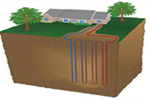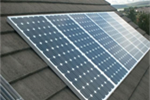Eco School
Sandal Magna Community Academy’s new building opened in September 2010 and won a RIBA Award. The school is one of the most carbon efficient schools in the UK.
The building accommodates 210 pupils aged between 5-11 years alongside nursery provision for 52 children. The school also contains a community room for use by parents for adult education and other activities.
The aim of the building called for high quality sustainable design addressing: functionality, sustainability, buildability, efficiency, aesthetics and durability.
Inside the school, services and building elements such as ventilation, soundproofing, sprinklers are all proudly visible. This is quite deliberate: part of the brief was to make the building a demonstrative tool to form part of the curriculum for learning about buildings and sustainability.
Below are several sustainability features outlining the school aims to reduce its carbon footprint.
The Sustainable Initiatives Include:
Ground Source Heating

Beneath the surface, the ground stays at a constant temperature. At just a few feet down it maintains between 11-12 degrees centigrade, even in winter.
Water is pumped through lengths of pipes that are buried beneath the surface, where it absorbs heat from the earth, causing water to heat up. The hot water is then stored in a hot water tank.
This can then be used for hot water in the school or in our central heating system to keep our school warm.
By using the earth’s natural energy store, we are reducing the amount of energy the school will use. We are reducing the amount of carbon dioxide we emit into the atmosphere.
Photovoltaic Panels

Photovoltaic panels installed on the roof catch heat and light from the sun’s rays. This heat and light is then converted into free electrical energy.
The electrical energy can then be used in the school for its electrical items such as lights and computers.
Even on a cloudy day, the panels will still collect some energy from the sun, although this will not be as much as on a bright sunny day.
The process of converting the sun’s energy into electricity does not cause any carbon dioxide emissions, therefore helping the atmosphere too!
Recycled Materials

Bricks from the old school building were recycled and used within the new school building.











